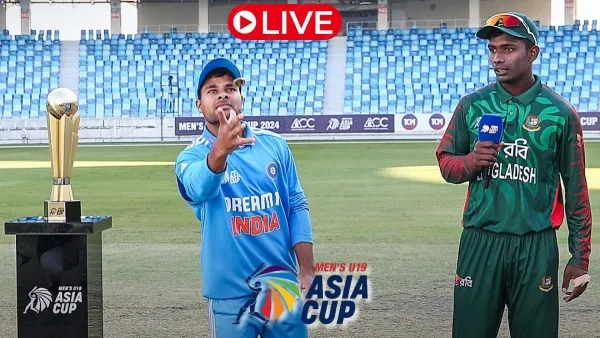In a riveting final match of the Under-19 Asia Cup held in Dubai, the Indian men’s junior cricket team fell short of expectations, losing to a spirited Bangladeshi side by 59 runs. This loss marked a significant moment in the tournament as Bangladesh clinched the title with an inspired all-round performance, signaling their growing strength in junior cricket.
The match, played at the Dubai International Stadium, saw Bangladesh elect to bat first after winning the toss. Despite early setbacks, the Bangladeshi team showcased remarkable resilience, with their middle order stepping up when it mattered the most. Key contributions came from their captain and the lower-order batters, who guided the team to a competitive total of 198 runs. The Indian bowlers, led by risht-arm pacer Yudhajit Guha and Chetan Sharma, managed to restrict the run flow at various stages, but lapses in fielding allowed Bangladesh to cross the 190-mark.
Chasing 198, the Indian batting lineup crumbled under pressure, struggling against the disciplined Bangladeshi bowling attack. The top order faltered as pacers and spinners from Bangladesh bowled with precision and aggression. The middle order tried to rebuild the innings, with captain Mohamed Amaan playing a gritty knock, but the mounting required run rate proved too steep. The Indian innings folded for 139 in the 35th over, falling 59 runs short of the target.
This defeat underscores the importance of adaptability and handling pressure in high-stakes games. While the Indian team entered the final as favorites, having performed consistently throughout the tournament, they were outclassed on the day by a team that appeared more determined and cohesive. Bangladesh’s victory was particularly remarkable given their limited success in previous editions of the tournament, highlighting their rapid development in age-group cricket.
For India, the loss is a valuable learning experience for the young cricketers, who have the potential to represent the senior national team in the future. The tournament displayed promising talent, but it also exposed areas requiring improvement, such as middle-order stability and fielding under pressure.
As the Indian team regroups and looks ahead to upcoming challenges, this setback will likely serve as a catalyst for growth, ensuring that these young players emerge stronger and more prepared for the rigors of international cricket.

